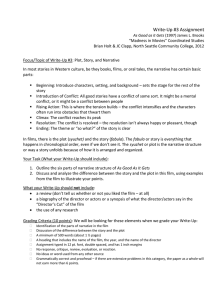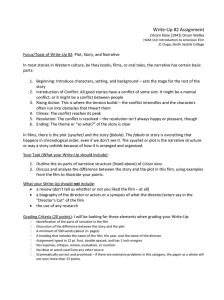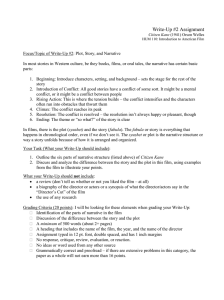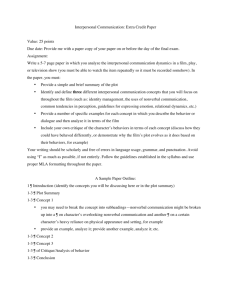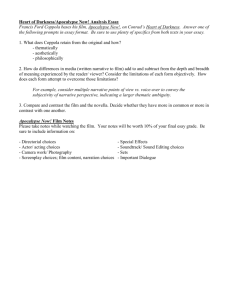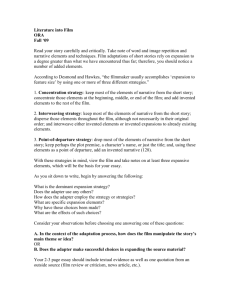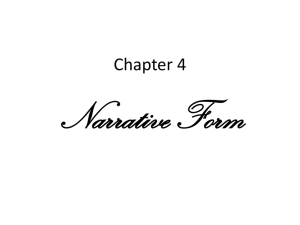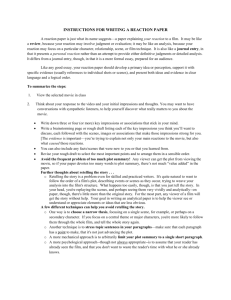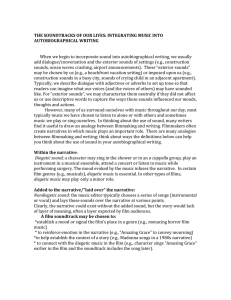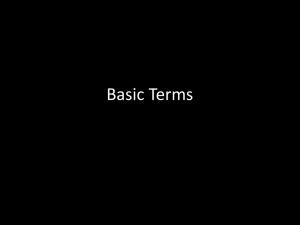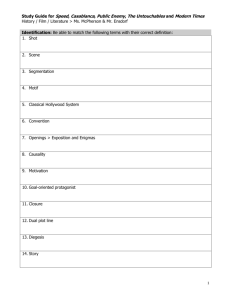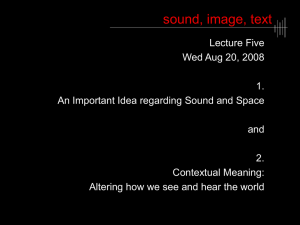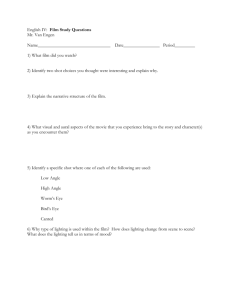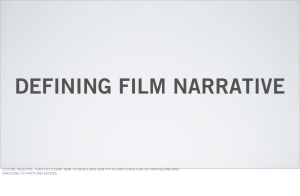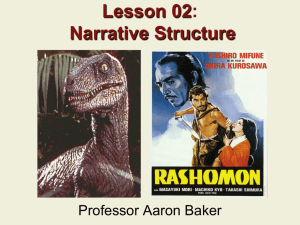Film Form notes
advertisement
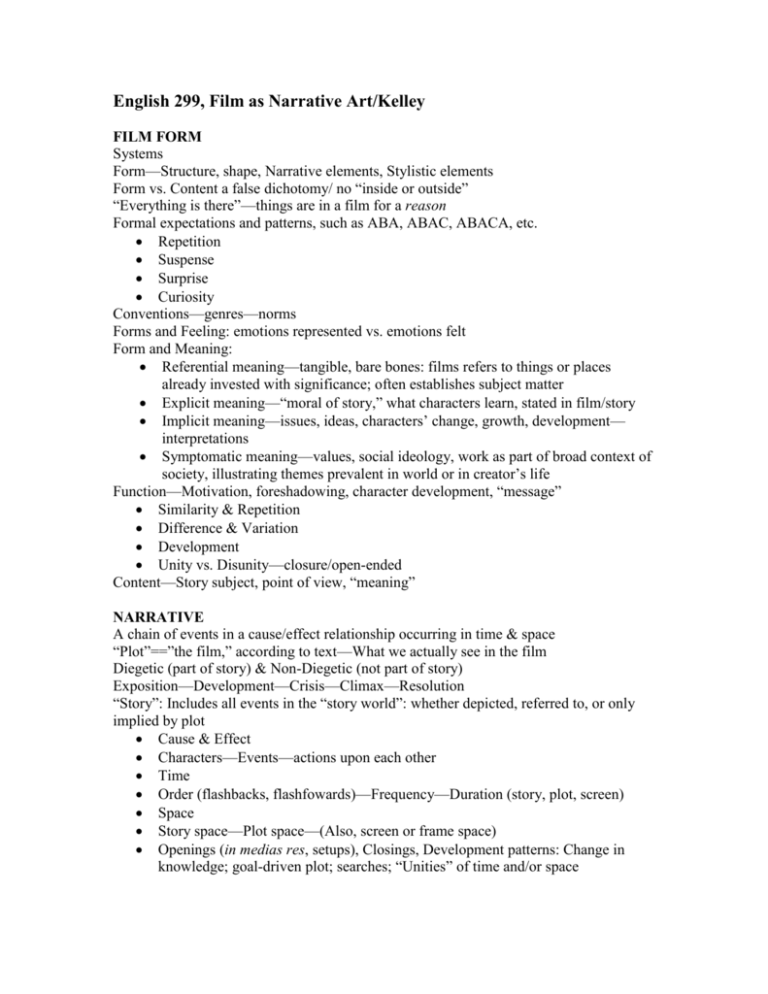
English 299, Film as Narrative Art/Kelley FILM FORM Systems Form—Structure, shape, Narrative elements, Stylistic elements Form vs. Content a false dichotomy/ no “inside or outside” “Everything is there”—things are in a film for a reason Formal expectations and patterns, such as ABA, ABAC, ABACA, etc. Repetition Suspense Surprise Curiosity Conventions—genres—norms Forms and Feeling: emotions represented vs. emotions felt Form and Meaning: Referential meaning—tangible, bare bones: films refers to things or places already invested with significance; often establishes subject matter Explicit meaning—“moral of story,” what characters learn, stated in film/story Implicit meaning—issues, ideas, characters’ change, growth, development— interpretations Symptomatic meaning—values, social ideology, work as part of broad context of society, illustrating themes prevalent in world or in creator’s life Function—Motivation, foreshadowing, character development, “message” Similarity & Repetition Difference & Variation Development Unity vs. Disunity—closure/open-ended Content—Story subject, point of view, “meaning” NARRATIVE A chain of events in a cause/effect relationship occurring in time & space “Plot”==”the film,” according to text—What we actually see in the film Diegetic (part of story) & Non-Diegetic (not part of story) Exposition—Development—Crisis—Climax—Resolution “Story”: Includes all events in the “story world”: whether depicted, referred to, or only implied by plot Cause & Effect Characters—Events—actions upon each other Time Order (flashbacks, flashfowards)—Frequency—Duration (story, plot, screen) Space Story space—Plot space—(Also, screen or frame space) Openings (in medias res, setups), Closings, Development patterns: Change in knowledge; goal-driven plot; searches; “Unities” of time and/or space Narration—flow of narrative information; not the same as “narrator” Range & Depth of story information Omniscient—viewer knows much or all Limited—viewer follows one or more characters Mixed—changes back and forth Diegesis—The narrative, or story being related Diegetic—part of the story’s world Non-dietetic—does not exist in the story world even though we can see or hear it in the film (titles, background music, some insert shots, etc.) Deus ex machine MISE EN SCENE—What appears in the scene itself Realism vs. stylization Setting Art Direction/Set Design & decoration, props Costumes and makeup—appropriateness to characters, time period, setting, mood, tone Lighting—quality—direction—source—color--“three-point” lighting style Figure Expression & Movement—Staging (“Blocking”)—Acting (realism/stylization)—gestures

